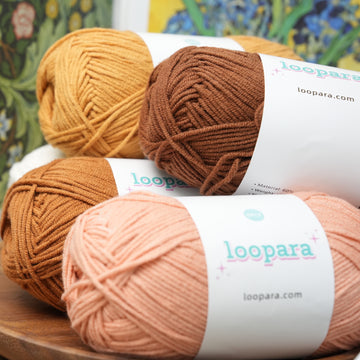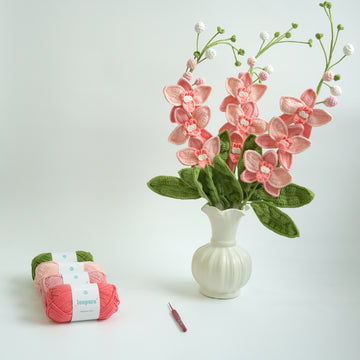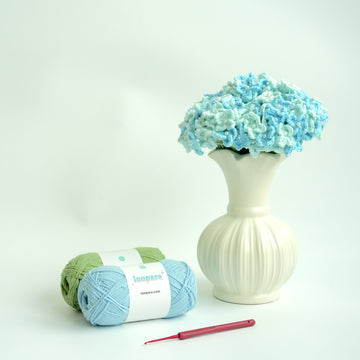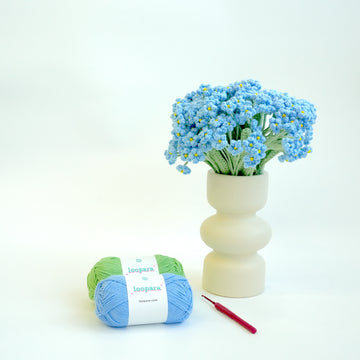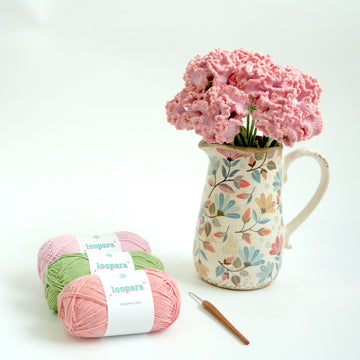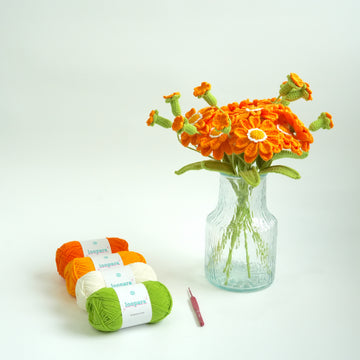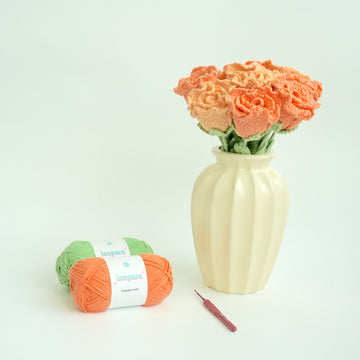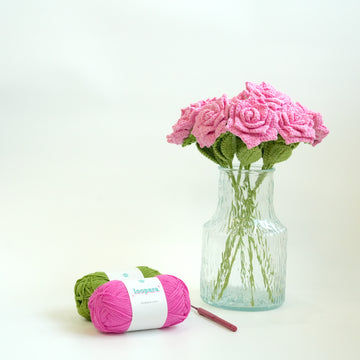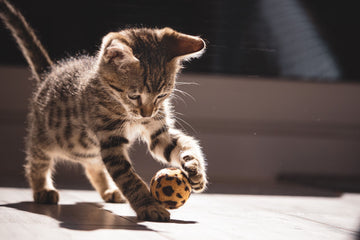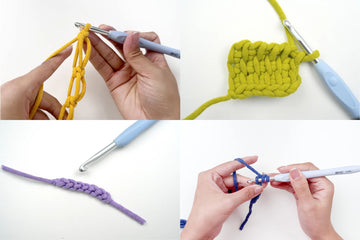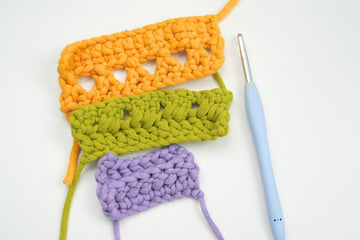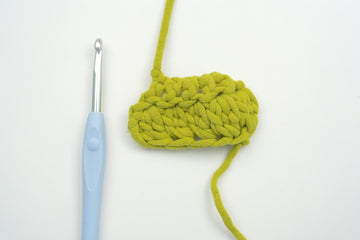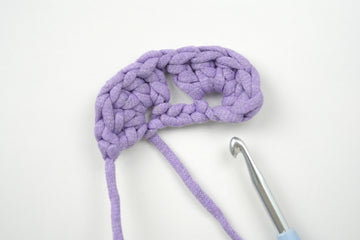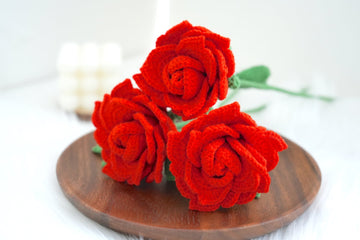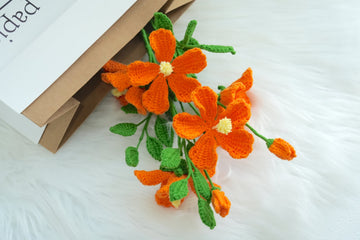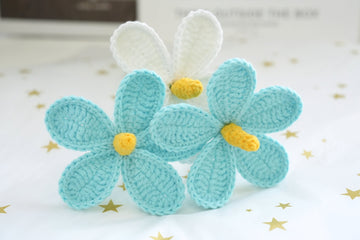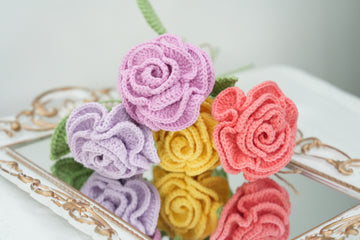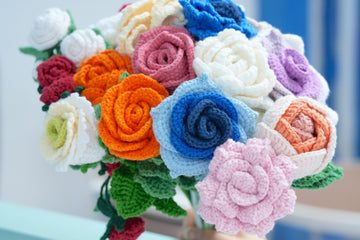Welcome to our tutorial on the Crochet Moss Stitch, also known as the Linen Stitch or Granite Stitch. This beautiful and versatile technique creates a tight, woven-like texture that's both visually appealing and practical. The Moss Stitch is worked by alternating single crochet and chain stitches.
What makes the Moss Stitch so popular among crocheters is its ability to create a fabric that's both sturdy and flexible. It's perfect for a wide range of projects, from cozy scarves and blankets to stylish bags and home decor items. The resulting texture has a subtle, sophisticated look that's reminiscent of woven linen, hence its alternative name.
In this guide, we'll walk you through the Moss Stitch step by step, with both a video tutorial and detailed images to help you master this charming technique. Whether you're a beginner looking to expand your stitch repertoire or an experienced crocheter seeking a new texture to play with, the Moss Stitch is sure to become a favorite in your crochet arsenal. Let's dive in and discover the beauty of this timeless stitch!
Pin for later
Add this Moss Stitch tutorial to your crochet board – it's the perfect technique to create that cozy, woven look you've been dreaming of for your next project!

Crochet Moss Stitch Video Tutorial
Materials Needed
- Yarn: The recommended is 5 mm yarn. The reason why we chose this thick yarn is to make teaching easier. For beginners practicing, thicker yarn is also recommended.
- Hook: To match 5 mm yarn, a 6 mm hook is the best pairing.
Preparation

Step 1. Start with a slip knot on your hook.

Step 2. Chain the desired number of stitches for your project.
How to Crochet Moss Stitch – Step by Step for Beginners

Step 1. Yarn over, insert the hook into the 4th chain from the hook.


Step 2. Pull up a loop, yarn over, and pull through both loops to complete a single crochet.

Step 3. Chain 1 to complete the first moss stitch cluster.
Common Problems and Solutions
Why does my moss stitch look like ribbing?
If your moss stitch looks like ribbing, you might be repeating the same pattern on every row instead of alternating. Remember, moss stitch requires you to knit the purls and purl the knits from the previous row. Double-check your pattern and make sure you're switching the stitch type every two rows. With practice, you'll see the distinctive moss texture emerge.
FAQ
What's the difference between seed stitch and moss stitch?
Seed stitch and moss stitch are similar but distinct. Seed stitch alternates knit and purl stitches in both rows and columns, creating a bumpy texture. Moss stitch repeats the same pattern for two rows before switching, resulting in a more structured, rectangular pattern. Both create textured fabrics but with slightly different visual effects.
Do you need an odd number of stitches for moss stitch?
For traditional moss stitch, an even number of stitches works best. This allows you to maintain the pattern consistently across rows. However, there are variations of moss stitch that can work with odd numbers. Always check your specific pattern instructions, as some designers may adjust the stitch count for their particular design.
How many stitches do you cast on for a moss stitch?
The number of stitches to cast on for moss stitch depends on your project and desired width. There's no fixed number, but remember that an even number typically works best for the traditional pattern. Start with a small swatch using your chosen yarn and needles to determine the right stitch count for your project.
Does moss stitch look the same on both sides?
Moss stitch is not entirely reversible, but it looks similar on both sides. The right side has a more defined texture, while the wrong side appears slightly flatter. However, the difference is subtle enough that many consider it practically reversible, making it great for scarves or blankets.
Is moss stitch easy?
Moss stitch is relatively easy, especially for those familiar with knit and purl stitches. It requires alternating between knit and purl stitches in a specific pattern, which some beginners might find a bit tricky at first. With practice, it becomes quite simple and rhythmic to work.
What is the difference between moss stitch and extended moss stitch?
Extended moss stitch is a variation that creates a more pronounced texture. While regular moss stitch alternates the pattern every two rows, extended moss stitch typically repeats the pattern for four rows before switching. This results in larger "moss" sections and a more dramatic textural effect.
What is the moss stitch good for?
Moss stitch is versatile and great for many projects. Its texture adds interest to simple items like scarves, hats, and blankets. It's also excellent for borders, as it lies flat without curling. The stitch creates a sturdy, slightly elastic fabric, making it suitable for sweaters, bags, and even dishcloths.
More Beginner Crochet Stitch Tutorials
Dive deeper into crochet with these fundamental stitches. Each tutorial will help you expand your skills and create more diverse projects.
- Bobble Stitch (bo)
- Popcorn Stitch (pc)
- Tunisian Crochet (tc)
- Single Crochet (sc)
- Double Crochet (dc)


